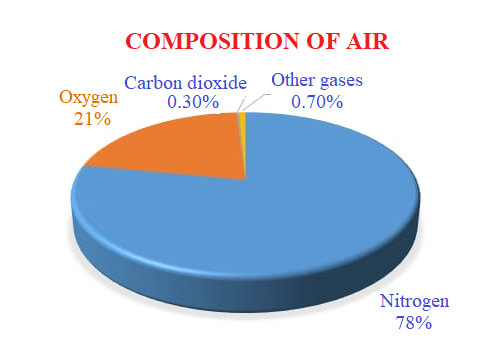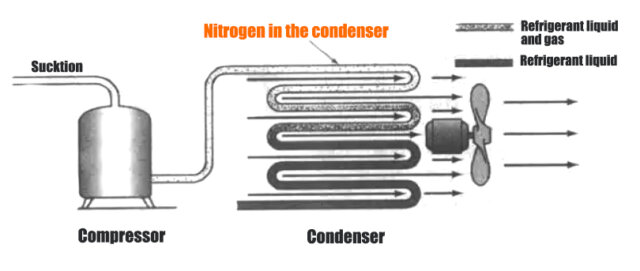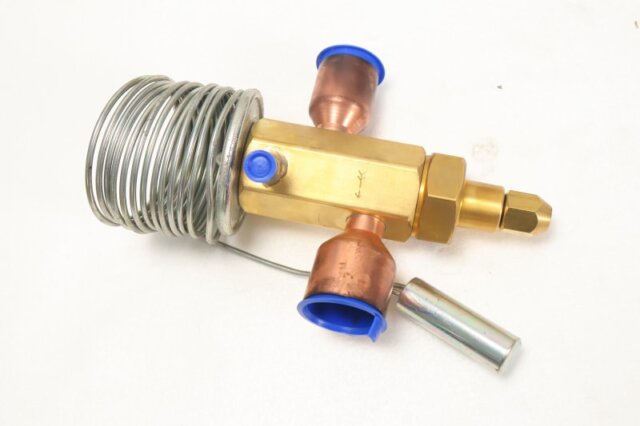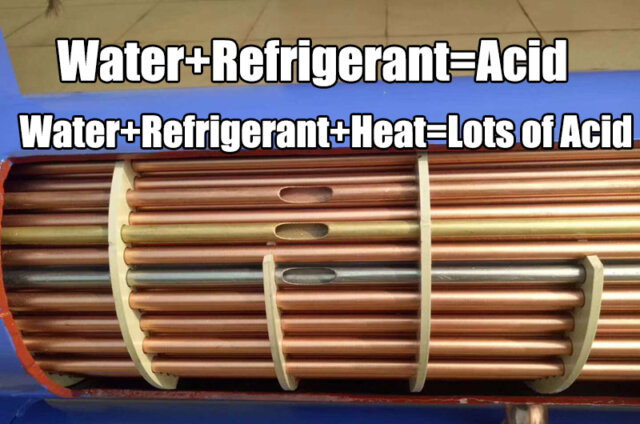Many folks new to the refrigeration industry understand that refrigeration systems require vacuuming, but the ‘why’ behind it remains a mystery to some. So, what’s the real reason these systems need a good vacuum?
“I don’t know, that’s what I heard”.
“Mixing air inside the cooling system is not good for the system, right?”
“The chiller system will consume more power”.
“With air inside, it is easy to have a high-pressure alarm”.
Think of vacuuming as a crucial pre-party cleanup for your refrigeration equipment. This all-important process makes sure to evict the uninvited guests – the sneaky nitrogen, the intrusive oxygen, the lingering water vapor, and other mischievous impurities – lurking within the equipment and pipelines.
Why, you may ask? Well, just as party crashers can ruin your carefully planned soiree, these air-bound elements can wreak havoc on your refrigeration system’s smooth operation.
The vacuuming process acts like the diligent butler, ensuring your refrigeration equipment is ready to welcome its most important guest – the refrigerant – without any unwanted disruptions. By laying out the red carpet for the refrigerant, vacuuming plays an indispensable role in guaranteeing your refrigeration system’s optimal performance.
So, remember – a good vacuuming is not just housekeeping, it’s the key to throwing a successful cooling party for your refrigeration equipment!

The effect of NITROGEN in refrigeration systems
Think of nitrogen as the rule-breaking rebel of your refrigeration system. Unlike its play-nice, conforming counterparts, nitrogen is a non-condensable gas. It refuses to condense inside the condenser, choosing instead to play tag with the refrigerant as it circulates throughout the system.
The Nitrogen Uprising in the Condenser
The first sign that nitrogen is crashing your refrigeration system’s party is a high-pressure warning. This is like the loud music that gets the cops called on a house party – an unmistakable indicator that something is amiss.
Since it snubs the condensation process, nitrogen ends up taking over the heat transfer area in the condenser like a group of party-goers monopolizing the dance floor. This leads to an uptick in the condensing pressure of your refrigeration system, making the exhaust pressure spike like the tension in a dramatic movie scene.
This domino effect continues with an increase in exhaust temperature and compression ratio. The end result is akin to your sound system blowing a fuse due to blaring music – higher power consumption. The culprit? Our rule-breaking party crasher, nitrogen.
So, the presence of nitrogen in your refrigeration system isn’t just an inconvenience, it’s a party foul that can send your system’s efficiency and performance spiraling. It’s definitely a guest you’d want to leave off the invite list for your refrigeration system’s efficient operation party.

Nitrogen in the evaporator
Now, let’s track nitrogen’s disruptive antics to the evaporator. Unlike the cooperative refrigerant that evaporates as it should, nitrogen stands its ground, refusing to evaporate. Instead, it acts like a scene-stealer on a movie set, hogging the heat exchange area of the evaporator and preventing the refrigerant from fully evaporating.
Take a moment to consider the implications. What happens when your evaporator can’t do its job properly? Got your answer? Well, here’s the big reveal: it’s like leaving your freezer door slightly open – your evaporator is prone to frosting. Nitrogen’s refusal to evaporate doesn’t just mess with the condenser; it also turns the evaporator into a winter wonderland, and not in a good way.
Nitrogen passes through the expansion valve
The impact of nitrogen passing through the expansion valve isn’t as well-documented in the literature, but let’s venture a theory. It’s widely known that the expansion valve can succumb to whistling or jittering if it encounters refrigerant vapor on its doorstep.
Let’s take that understanding and apply it to our uninvited guest, nitrogen. As it gatecrashes the expansion valve, nitrogen is likely to trigger the same unsettling symphony of whistles and jitters.
Furthermore, nitrogen doesn’t just pass through; it sprawls out, commandeering space meant for the refrigerant flow. With the same valve opening, the flow rate is compelled to cut back due to the unanticipated occupant. This directly impedes the throttling prowess of the expansion valve. This is more of an educated hypothesis, but it underscores the far-reaching impact of nitrogen throughout the refrigeration system.

The Unwanted Effects of Oxygen in Refrigeration Systems
Effect on refrigerant pressure
Oxygen makes up roughly 20% of the air around us, and like its fellow non-condensable gas nitrogen, it enjoys causing a ruckus in refrigeration systems. Once it gatecrashes the system, it conspires with nitrogen to escalate the condensing pressure and exhaust temperature. The mechanics of this mischief mirror those of nitrogen, so we’ll skip the repetition and move on to other audacious antics of oxygen.
The Organic Invaders
Oxygen doesn’t just affect pressures and temperatures; it gets crafty. It chemically reacts with the refrigeration oil inside the system, whipping up organic substances in the process. Over time, these organics transform into impurities, marching into the refrigeration system to cause all sorts of mayhem like clogs and dirty blockages.
The Acidic
But wait, oxygen isn’t done with its chemistry experiment yet. It mixes with the refrigerant, water vapor, and other elements to produce acids. These acidic compounds take delight in oxidizing the refrigeration oil, posing a threat to various system components and jeopardizing the motor’s insulation.
These acidic stowaways don’t announce their presence immediately. They lurk within the system, apparently harmless. However, given time, they reveal their destructive nature, ultimately leading to the downfall of the compressor. Hence, oxygen’s presence in the refrigeration system is far from benign—it’s a ticking time bomb.

The effect of Vapor in refrigeration systems
Ice blockage
When water enters a refrigeration system, it doesn’t take a holiday. The first spot on its disruption itinerary is usually the throttling structure. As the water vapor breezes through the throttling device, it encounters a drastic drop in temperature down to the freezing point. This frigid transition births ice, which dutifully obstructs the throttling structure’s tiny passages. The result? An icy blockade that would make a glacier proud.
Pipe corrosion
But water vapor doesn’t stop at freezing throttle structures. It also sneaks into pipes and other system parts, causing a corrosion carnival that eventually leads to blockages. Think of it as the internal rust that chips away at the efficiency and longevity of your refrigeration system.
Sludge deposits
In its grand finale, water vapor decides to show off its chemistry skills. It cozies up with refrigerant oil, refrigerant, and organic substances during the compressor’s high-temperature compression phase. This unholy union leads to motor winding damage, metal corrosion, and the formation of sludge deposits. This sticky muck can choke the life out of your refrigeration system, significantly reducing its performance and lifespan.
Water vapor + acid + oil = sludge deposits
